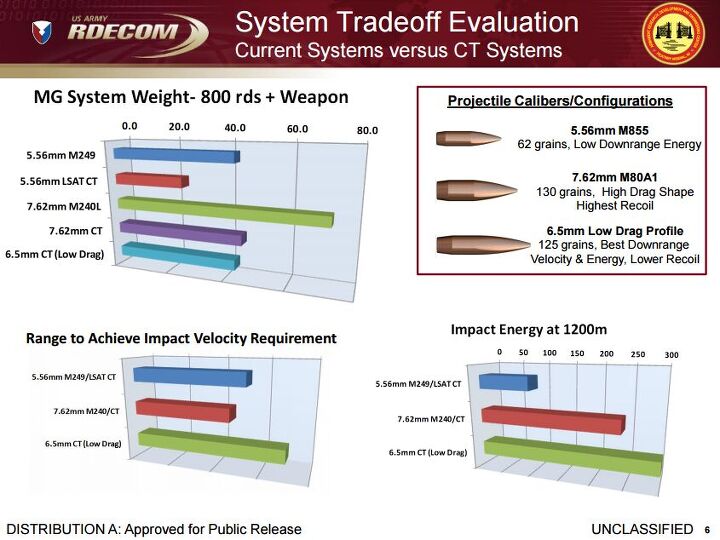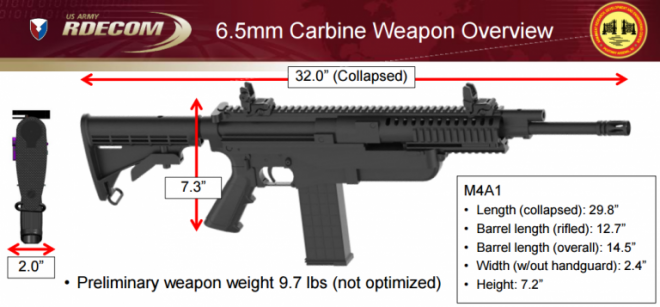One of the blessings of being a writer with TFB is that we are able to collaborate and learn from one another. Its a heck of perk, as between the staff here there is an incredible wealth of knowledge that I learn from on a regular basis. On the flip side, occasionally we disagree on topics, of which I do disagree with Nathaniel F on his assessment of the Army’s CSAT program. In a recent article focusing on the Army’s cased telecopic ammo program, Nathaniel came to a few conclusions that I do not agree with, given my own resources.
First, let’s start with what we agree on.
1.) The Army has proven, time and time again, that they are fully capable of screwing up a perfectly good program. Both Nathaniel and I agree that the Modular Handgun System program is far from what it could be.
2.) Trying to have individual infantry engage to 1200 meters with a carbine or standard rifle is a fantasy. The optics that would be on a common rifle would be insufficient before we even talk about actual marksmanship abilities, etc.
3. Agree with the following direction the Army wants to go:
: An emphasis on advanced, next-generation stabilized optics, lightweight cartridge cases, and small arms ammunition effective to 1200 meters or beyond.

However, I do disagree with the key paragraph summarizing the results and the conclusions drawn from those summations:
Three things are evident from these slides: 1.) CTSAS seems to be seeking a 1200m effective range for the ammunition for both the support weapon and carbine (shown on slide 11), 2.) 6.5mm CT retains energy better, but is not significantly lighter than 7.62mm CT ammunition, and both are 30% heavier than even brass-cased 5.56mm, 3.) CTSAS has given up on the lethality and mobility increases cited by the LSAT program in 2014 as advantages of the lighter weight 5.56mm CT weapon versus the M249 (the 6.5mm and 7.62mm CT weapons and ammunition are both heavier than the M249 and its ammunition):
- The Army has only shown that the caliber and current loading is capable of maintaining more energy downrange out to 1200 meters. The slides have not shown that the Army is wanting this as a point-target engagement in their individual carbines. By “effective” as Nathaniel is implying the term in its holistic sense (including accuracy), not the Army’s retained-energy only definition per the slides. All slide 11 shows is a carbine, with no claims as to its intended engagement ranges.
- Yes, the 6.5 is not significantly lighter than 7.62 CT, but it is significantly lighter than 7.62 traditionally cased ammunition. CTSAS has stated that the 6.5 loading is based off of the 7.62 loading. They have not yet explored the “hybrid” loading that would put the round in the territory of 6.5 Grendel or 6.8 SPC, which the Army is open to per my knowledge. The 6.5 is being left its current state now as sizing is the same as the 7.62 for ease of logistics to get the technology to TRL 7 from its current TRL-5.
- By its nature, lethality is increased by having more retained energy in the projectile. Mobility is increased by reducing the load, which the CTSAS does over the 7.62 standard ammo. In fact, the presentation said nothing of eliminating work on the 5.56 CT ammo, just that it was going to explore the 6.5CT in the carbine form.
From my sources at Picatinny, the CTSAS Program is designed to get the technology up to TRL-7 and prove that it is capable. The Army will then evaluate if the potential for CT given its advantages (weight) and weakness (accuracy for example, is reduced as the round has much more distance to obturate prior to engaging rifling). If the technology is proven to be up to the task, further programs will be initiated based on it for development.
In my reading, information, and opinion, this is an example of a small program being executed well. If anything, we should be thankful of the trepidation the Army is taking to it otherwise we just might end up with a OICW or ACR program that goes off the deep end…
 Your Privacy Choices
Your Privacy Choices
